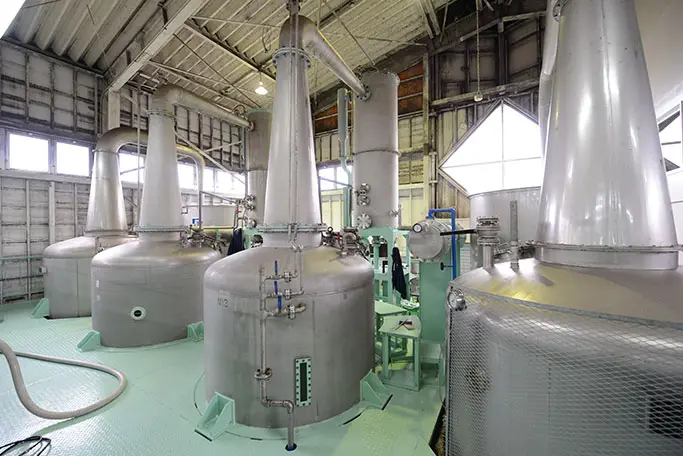Compared to other distilled spirits and other premium shochus, some of Nankai Shochu’s distinguishing characteristics are its delicately fragrant aroma and clean, fruity profile. While this is attributed to its use of high-grade kokuto, or “black sugar,” from Amami island, it is also largely due to the fact that Nankai is single-distilled through a process called vacuum-distillation.
Vacuum-distillation is a distillation method performed under reduced pressure which, in turn, lowers the boiling point of many liquids. Scientists use this modern method to remove solvents from materials and desalinate ocean water. But as we now know, vacuum-distillation also produces delicious distilled spirits. Distilleries now use this high-tech purification technique in the production of high quality gins and shochus.
Atmospheric versus Vacuum-Distillation
Traditional atmospheric distillation evaporates its volatile components between 170 and 200 degrees Fahrenheit. Vacuum-distillation, where a pump removes the air out of the still, reduces the evaporation temperature to between 104 to 140°F.
Traditional distillation “cooks” liquids and other aromatic and flavoring ingredients at higher temperatures. Because cooking changes the quality of many delicate fruity and floral aromas, some distilleries employ vacuum-distilling at cooler temperatures to maintain fresher flavors of the main ingredients and any additional infusions.
Vacuum-Distilled Shochu
Distilleries produce shochu by atmospheric distillation and/or vacuum-distillation, depending on the desired aroma and flavor profile of the resulting spirit. With atmospheric distillation, the higher temperatures evaporates most of the liquid from the fermented mash. Its vapor contains more components that give the shochu a distinctively thick and rich aroma and flavor. This is common with shochus made from sweet potato or barley. On the other hand, vacuum-distilled shochus, like Nankai, have a milder and cleaner flavor and aroma profile. Nankai is therefore easier for first-time shochu drinkers to enjoy on the rocks or in a cocktail.
So, which is better? This purely depends on the taste preferences of the drinker. Shochu, like many spirits, has a progression in terms of palate development. Similar to how smooth tequilas like Patron paved the way for complex and full-bodied mezcals, vacuum-distilled shochus like Nankai will open the shochu category. Once people discover the beauty of vacuum-distilled shochu, it won’t be long before they seek to explore the vast catalog of Japanese shochus.
Sources:
- A Chill at the Still to Keep Flavors Fresh
- Shochu, The Japanese Distilled Spirit
- Vacuum Distillation: When Gin Goes High Tech


